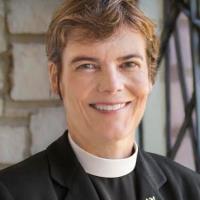Commentary on Mark 1:21-28
The cultural distance between the world of this text and contemporary society presents challenges for interpretation.
To attribute symptoms of shouting and convulsing with possession by an unclean spirit is not consonant with our understanding of the causes of mental or physical illness. Exorcism may appear alien. Jesus’ confrontation in the synagogue has been read as Jesus teaching over and against “Judaism,” while it is more historically accurate to see Jesus’ deeds and words, his ‘new teaching” to make sense within, and not outside, the ideals of Jewish covenant faithfulness.
Within the narrative world of the gospel of Mark, this encounter is the first public deed of power in his ministry. The story sets up the conflict that structures the first half of the gospel and that was displayed in the temptation of Jesus by Satan in the wilderness. It is the conflict between the power of evil, associated with Satan (Beelzebul, Mark 3:22) and demons and the power of God exercised through Jesus. This cosmic conflict is reflected in the earthly realm by the struggle of Jesus with demons, the controversy between Jesus and “scribes and Pharisees,” and the tension between Jesus and his “mother, sisters, and brothers” (Mark 3:31-35).
The cosmic conflict has a social political dimension; possession by demons (legion) is parallel to occupation of the countryside by Roman power (Mark 5:1-13) The conflict is described in violent terms “have you come to destroy us?” Elsewhere it is likened to a battle for ownership of a house (Mark 3:21-27). People who suffer the effects of being occupied or “possessed” by demons lose their ability to control their movements and their voices; either they are immobilized or compelled to move destructively (Mark 9:20-22). They are self-destructive (Mark 5:5). Exorcism by Jesus results in healing and restoration.
In this episode the authority (exousia) of Jesus’ teaching contrasts with that of the scribes and is paired with his dramatic and effective exorcism of the unclean spirit. Those who witness it are amazed both by the authority of his teaching and his authority over the unclean spirits. The impact of his actions causes his reputation to grow throughout Galilee.
Within the account of the exorcism is a dialogue, initiated by the unclean spirit(s) who calls Jesus of Nazareth by name and appears to know his purpose — “have you come to destroy us?” The unclean spirit makes a demonic “confession”/recognition and calls him “the holy one of God.” Jesus’ responds by commanding him to “Be silent” and to “come out of him.” That the unclean spirit is the first to name Jesus and acknowledge his power is an early instance of Mark’s ironic reversals and surprises. Evil forces have the most to lose in the coming of Jesus and the “good news.” Apprehending the threat Jesus poses, the spirit exits the man with one last spasmodic movement and one final cry.
Preachers can exploit the detail and drama of the gospel of Mark to portray what is at stake in Jesus’ battle with Satan. The possession by demons illustrates the reality of evil and gives it, even for modern hearers, a shape and a sound. In this first skirmish, Jesus prevails, but not without the unclean spirit protesting and acting out. A preacher might play with the motif of voice in the opening scenes of Mark: the voice of the prophet crying in the empty wilderness, the voice from heaven speaking at the baptism, and here the voice of the man, which is at the same time, the voice of the unclean spirit, who shouts and cries out the name of Jesus, not with admiration but with fear. Is the cry with a loud voice with which he comes out, a death rattle, or a curse? As the story proceeds the opposing forces will gather strength, will do more damage, and will seem to silence Jesus himself (Mark 14:61). Jesus commands the spirit to “be silent” with the same word as he commands the sea to “be still” “be silent” (Mark 4:39). He rebukes the unclean spirit, the sea (Mark 4:30) and even Peter (Mark 8:33).
There are risks in identifying the forces of evil and of God in contemporary struggles too, specifically, particularly if one assumes oneself and ones’ own “people” to be on the side of God. Contemporary preaching in communities with political and economic power should be cautious about this. However, the community that performed and heard Mark’s gospel, was powerless and poor in a country occupied by a powerful empire. The theological imagination of the victory of God’s power over illness, disability, and danger was for them, lifesaving good news.
The ancient world view that attributes illness to unclean spirits that lies behind this story, although outdated medically, does dramatize forces that wreck havoc within individual, communities, and countries — mental illness, addiction, sexual abuse, and racial hatred. The gospel proclaims Jesus’ “authority” over even the most unclean of spirits that continue to take us over.


January 28, 2018